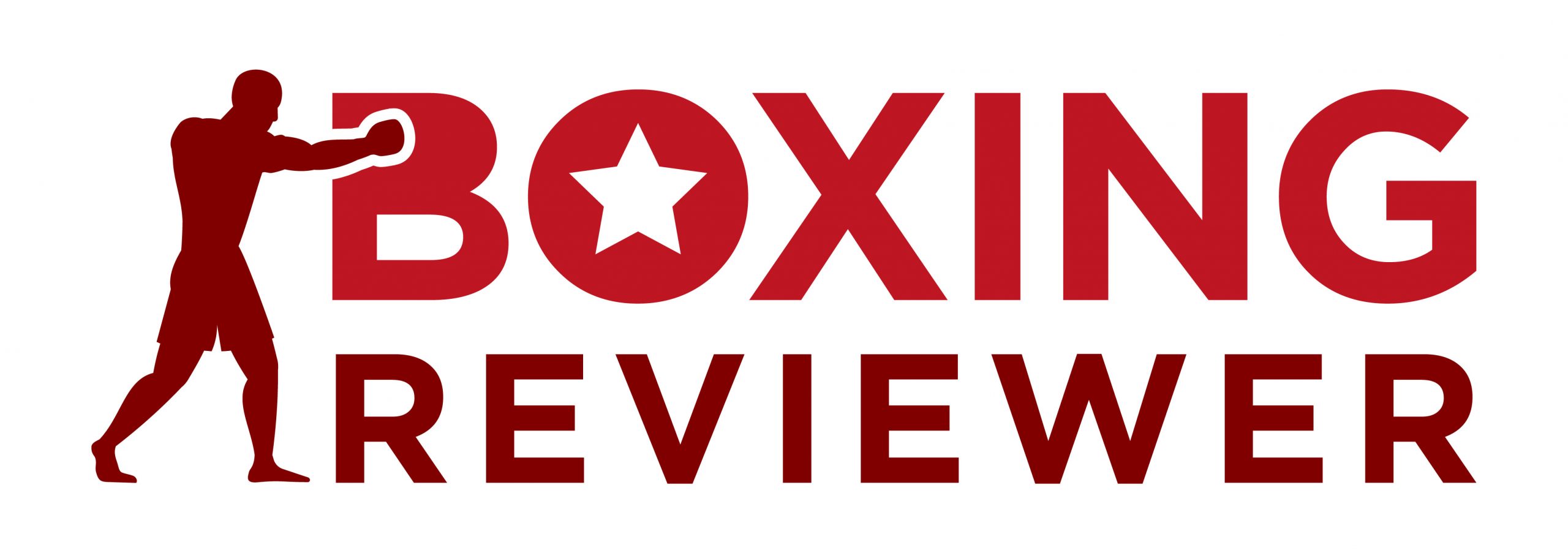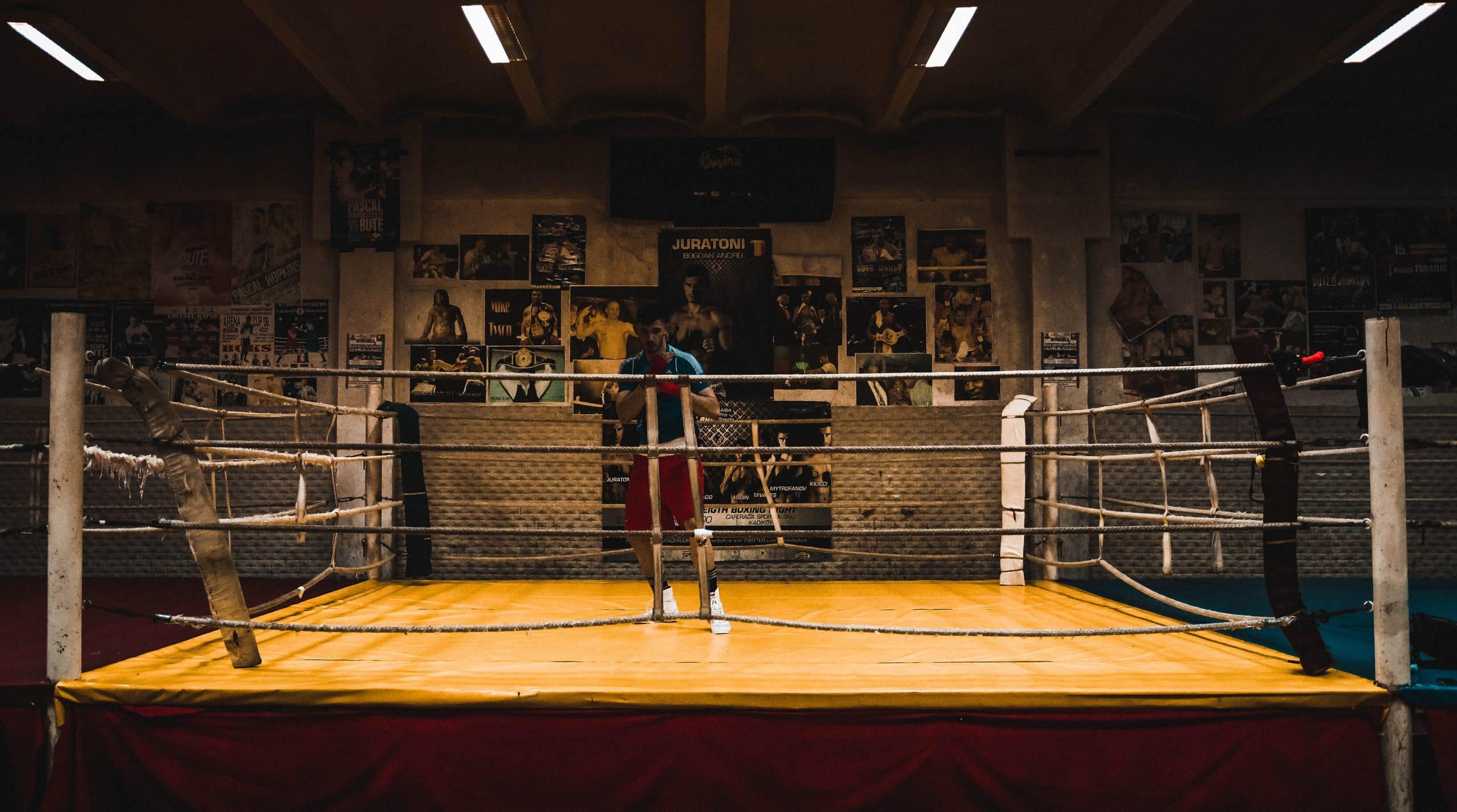Quick answer
Boxing rings are generally between 16ft and 20ft for amateurs, and between 18ft and 24ft for pros.
The thing that most people will find out pretty quickly after getting into boxing is that hardly anything is standardised. Yes, the basic combat structure, what’s allowed and what isn’t is pretty consistent across the board, but even things as important as weight classes, scoring and glove sizes aren’t agreed upon across all the sanctioning bodies worldwide.
This brings us onto the subject of ring size, and more specifically how big or small a boxing ring is supposed to be. What may seem quite a trivial subject actually has quite a significant impact on boxing matches, and specifically in the way that a larger ring favours certain types of fighter. We’ve seen this in matches, where a fighter is in a ring that’s clearly too large or small for the style they wish to employ and therefore they’re not able to be as effective as they might be in a ring more suited to them.

What we’re going to go through in this article are the standard sizes of both amateur and professional rings (and even then there’s no agreed standard), why certain sizes of ring favour a certain type of fighter, and what can happen when a fighter is placed in a ring that doesn’t work for them.
Boxing ring construction
Before we delve too deeply into this subject, it’s worth going over exactly what a boxing ring is and how it’s constructed, as this influences the size it will be. A ring is basically a raised platform, enclosed with ropes that allows two fighters a defined space in which to fight.
The raised platform is generally made of some kind of metal carcass. The ring’s frame will be covered with wooden boards, on top of which is some kind of foam padding generally over an inch thick. Canvas is then tied on top of the foam padding to create a floor that’s quite springy, strong but also soft - because fighters can sustain serious injuries; boxers can fall quite hard after a knockout punch and there have been instances (such as the one with Jimmy Barry vs Walter Croot) where a fighter sustains a head injury not from the punch received, but from the impact with the floor after the punch.
The rest of the ring consists of four corner pads, which are lashed to metal posts at each corner, and connected generally with four ropes spaced evenly. This allows a strong enclosure to keep fighters safely within the ring (which is soft, so a fighter doesn’t need to worry about injuring themselves on them) but also flexible enough to allow the cornerman to get into the ring between rounds, to allow fighters to enter and exit rings, etc.

Amateur and professional boxing ring sizes
Now - let’s take a look at actual ring sizes in amateur and professional contests - these can vary wildly depending on who’s sanctioning the fight, where the fight takes place, and possibly more importantly, the bargaining power of either side when it comes to signing a contract.
Often the “A-side” - the champion, or the higher-ranked fighter in a non-title match (or to be even more blunt, the one who brings in the most money) will stipulate the size of the ring. As we’ll mention later in the article, this can be a cause of contention among boxers, and is the reason some fights have not gone ahead.
Ring size can also be stipulated by the sanctioning body - which is generally dictated by where the fight is held. In some situations this is written into law - for example in Texas it’s specifically stipulated that rings are no smaller than 16ft and no larger than 24ft.
Let’s delve into the standard ring sizes for amateur and professional boxing.
Amateur
Amateur rings generally tend to be between 16ft x 16ft and 20ft x 20ft. The International Boxing Association (IBA), which sanctions Olympic-style boxing matches worldwide at the amateur level stipulates a 20ft x 20ft ring to be used for all contests. This is also the size of boxing rings that are used at the Olympic games.

Individual boxing organisations in various jurisdictions can stipulate that a ring be smaller than 20ft x 20ft, but it’s not overly common. It’s very rare for a ring to be any smaller than 16ft x 16ft.
A list of common ring sizes in amateur contest:
16ft x 16ft (smallest)
18ft x 18ft
20ft x 20ft (largest)
Professional
Professional rings are generally no smaller than 18ft x 18ft, and no larger than 24ft x 24ft. There have actually been instances of fights being called off after one fighter finds out the ring is smaller than this - a notable recent example of this was the scheduled fight between Librado Andrade and Donovan George. George arrived at the venue to find that the ring was a tiny 15ft x 15ft and his promoter refused to allow him to box due to the ring’s size. This may seem trivial but there are often contractual agreements put in place that a ring must be a certain size. In this situation, George’s contract stipulated a 20ft x 20ft ring.
Rings are generally between 18ft and 22ft for most professional fights. In the UK, for example, the BBBofC (the UK sanctioning body) won’t sanction a fight if the ring is any bigger than 20ft. Even fighters that you might expect would need the largest ring possible make do with 20ft - e.g. Tyson Fury and Deontay Wilder have fought in a 20ft ring. Anthony Joshua fought Andy Ruiz in their second fight in a 22ft ring, which is not unusually large, but isn’t overly common. Probably the largest ring that’s been used in a title fight in recent years is when Tyson Fury beat Wladimir Klitschko in 2015.
A list of common boxing ring sizes in professional contest:
18ft x 18ft (smallest)
20ft x 20ft
22ft x 22ft
24ft x 24ft (largest)
How ring size impacts fights
We’ve touched on one example where a fight has not gone ahead due to one boxer feeling that the ring was too small. But why is this - surely if you’re fighting someone it makes very little difference how much space you have to move around?
This isn’t actually the case, and for good reason. One really good example of this is the 2021 fight between Billy Joe Saunders and Canelo Alvarez. Canelo is a relatively short middleweight - his official height is 5’9”, but this was called into question when he fought Floyd Mayweather who is 5’8” and appeared no taller than him. Saunders is 5’11” and as a result, Canelo will fight much better on the inside,
Saunders complained that he was being asked to fight in an 18ft x 18ft ring, and wanted a 24ft x 24ft ring. This probably makes more sense now that we’ve explained that a fighter who wants to fight on the outside is going to hugely benefit from a larger ring, because it gives them more scope and more opportunity to move out of the way of someone with a smaller reach than them, or someone who wants to fight on the inside.
Conversely, if a boxer prefers to fight on the inside, is shorter, has less reach or simply doesn’t have the stamina to chase after someone who’s dancing away all night, they will without question prefer a shorter ring as it gives them more opportunity to trap their opponent, fight them at a closer distance, pin them against the ropes and do damage.

This is exactly what happened in the Saunders/Canelo fight. Saunders managed to stay out of range for a while, and attempted to pick Canelo off from the outside, but once Canelo was able to corner Saunders he was able to score at will and the referee eventually stopped the fight. If the ring had been bigger, Saunders may have been able to use his legs a little more to get out of the way. By the way - if you want to watch someone using their legs to get away, watch Muhammad Ali vs Cleveland Williams in 1966.
Conclusion
On the face of it, this may seem like a non-issue. However, it’s quite a contentious subject among boxers, and fights have been threatened or even cancelled over the subject of ring size. Certain sizes of ring favour certain types of fighter, and the size of the ring can even influence the outcome of a fight, especially if a larger ring allows an outside fighter to remain out of range of their opponent and pick them off with counter punches. Additionally, the fact that ring size is not standard across the sport helps certain types of fighter, as they can stipulate a larger/smaller ring when signing contracts.
Now you know why ring size is such a significant subject to boxers - and it’s definitely one to consider when you watch your next fight. Check out some of our other articles, where we delve in-depth into some of the overlooked aspects of boxing trivia and knowledge.
This article is part of our Boxing Info series.


0 comments